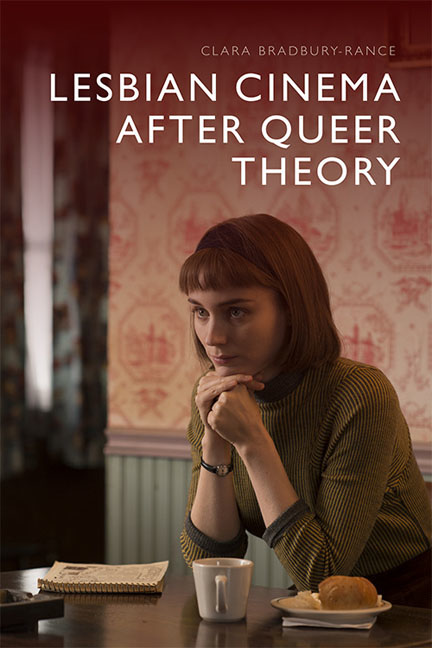Book contents
- Frontmatter
- Contents
- List of Figures
- Acknowledgements
- Preface
- Introduction: Looking after Lesbian Cinema
- 1 The Woman (Doubled): Mulholland Drive and the Figure of the Lesbian
- 2 Merely Queer: Translating Desire in Nathalie … and Chloe
- 3 Anywhere in the World: Circumstance, Space and the Desire for Outness
- 4 In-between Touch: Queer Potential in Water Lilies and She Monkeys
- 5 The Politics of the Image: Sex as Sexuality in Blue Is the Warmest Colour
- 6 Looking at Carol: The Drift of New Queer Pleasures
- Conclusion: The Queerness of Lesbian Cinema
- Notes
- Filmography
- Bibliography
- Index
Conclusion: The Queerness of Lesbian Cinema
Published online by Cambridge University Press: 14 December 2019
- Frontmatter
- Contents
- List of Figures
- Acknowledgements
- Preface
- Introduction: Looking after Lesbian Cinema
- 1 The Woman (Doubled): Mulholland Drive and the Figure of the Lesbian
- 2 Merely Queer: Translating Desire in Nathalie … and Chloe
- 3 Anywhere in the World: Circumstance, Space and the Desire for Outness
- 4 In-between Touch: Queer Potential in Water Lilies and She Monkeys
- 5 The Politics of the Image: Sex as Sexuality in Blue Is the Warmest Colour
- 6 Looking at Carol: The Drift of New Queer Pleasures
- Conclusion: The Queerness of Lesbian Cinema
- Notes
- Filmography
- Bibliography
- Index
Summary
If the figuration of lesbianism is now a sustained device of popular culture, then figuring lesbianism beyond the fixing of singularity, and indeed figuring (out) the ways in which the lesbian might still modify and not only particular-ise, is a project that has more critical urgency than ever before. Responding to the interplay between the lesbian's singular and coupled figurations, the starting point for my first case study was Teresa de Lauretis's argument that ‘it takes two women, not one, to make a lesbian’ (1994: 120). Lesbian Cinema after Queer Theory has read this provocation as an evocation of the lesbian as the woman, doubled: an amplification of the woman's existing threat, marked by, and constituted through, the simultaneous impossibility and paradoxical inevitability of the presence of the other in desire. In short: the cinematic lesbian was visually doubled before she was narratively coupled.
The trace of this cinematic history is found in the visual doublings and figural reflections that, rather than simply invoking past pathologisations, instead resist the containment of lesbian desire in the positive image of uncensored sex or culturally endorsed outness. The lesbian charge in the films discussed over the course of these chapters generates an image whose interruption becomes part of its register. The corpus exposes the various technologies at work in the image's capture and reception. The mechanisms of rehearsal, impersonation, modelling and performance reveal paradoxical tensions. Sameness and difference, self-reflection and identification, eroti-cism and narcissism all reduce the ease with which we might suggest that any one ‘lesbian’ has been ‘made visible’. Moving from the visual impossibility of lesbianism in the twentieth century, and forwards to the limits of the visually acceptable, I have argued in this book that, in the era of the visible in which the lesbian has now been recognised in law and representation, the sexuality she stands for exceeds the confines of both her singular and her coupled figu-rations. Thus, rather than shoring up her categorisation in the newly available terms of the visible, the films in this corpus, and my readings of them, have questioned and explained the lesbian's very on-screen legibility.
- Type
- Chapter
- Information
- Lesbian Cinema after Queer Theory , pp. 140 - 143Publisher: Edinburgh University PressPrint publication year: 2019



